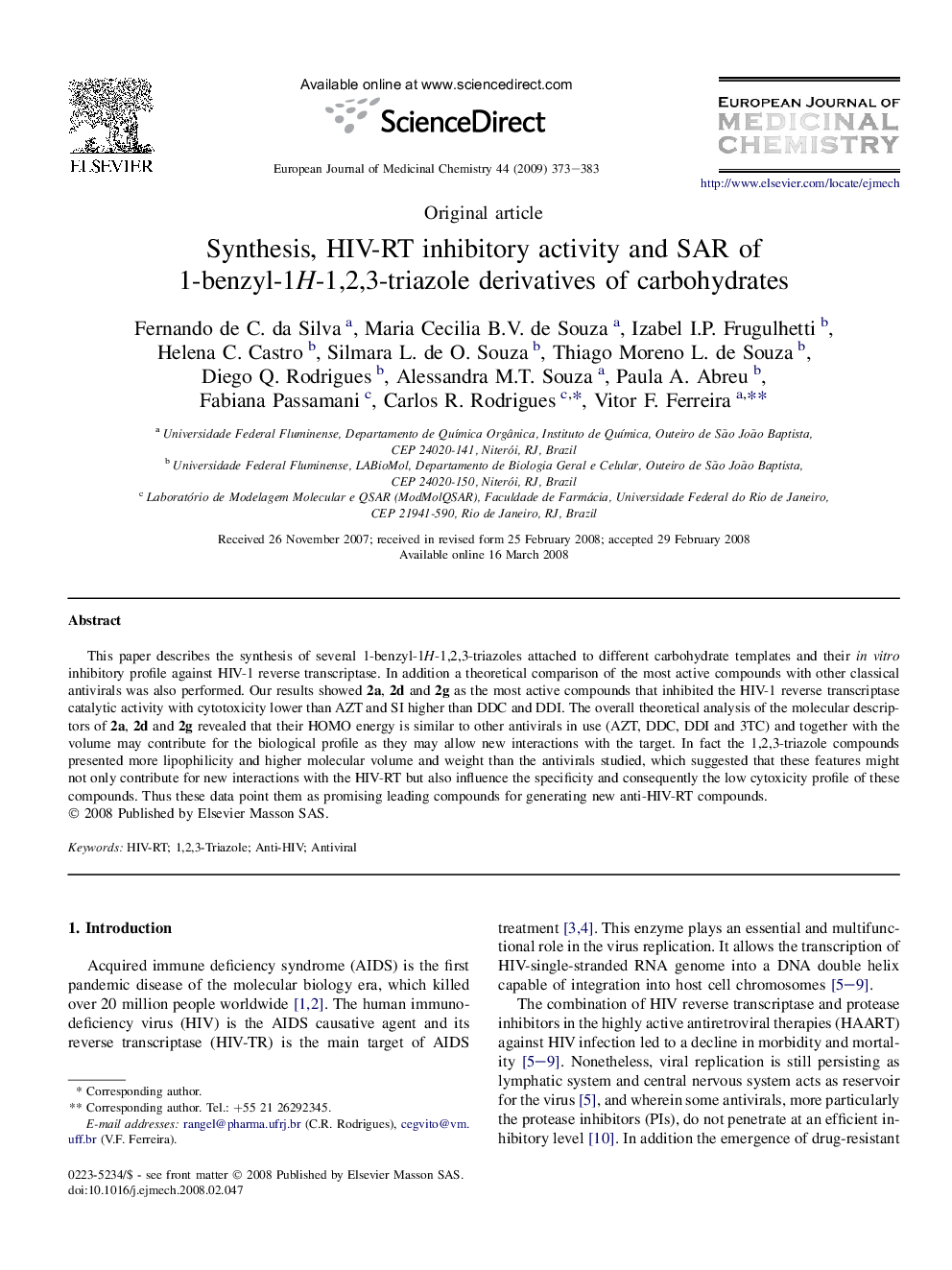| Article ID | Journal | Published Year | Pages | File Type |
|---|---|---|---|---|
| 1398060 | European Journal of Medicinal Chemistry | 2009 | 11 Pages |
This paper describes the synthesis of several 1-benzyl-1H-1,2,3-triazoles attached to different carbohydrate templates and their in vitro inhibitory profile against HIV-1 reverse transcriptase. In addition a theoretical comparison of the most active compounds with other classical antivirals was also performed. Our results showed 2a, 2d and 2g as the most active compounds that inhibited the HIV-1 reverse transcriptase catalytic activity with cytotoxicity lower than AZT and SI higher than DDC and DDI. The overall theoretical analysis of the molecular descriptors of 2a, 2d and 2g revealed that their HOMO energy is similar to other antivirals in use (AZT, DDC, DDI and 3TC) and together with the volume may contribute for the biological profile as they may allow new interactions with the target. In fact the 1,2,3-triazole compounds presented more lipophilicity and higher molecular volume and weight than the antivirals studied, which suggested that these features might not only contribute for new interactions with the HIV-RT but also influence the specificity and consequently the low cytoxicity profile of these compounds. Thus these data point them as promising leading compounds for generating new anti-HIV-RT compounds.
Graphical abstractWe have described the synthesis of several 1-benzyl-1H-1,2,3-triazoles attached to different carbohydrate templates and their in vitro inhibitory profile against HIV-1 reverse transcriptase and a theoretical comparison of the most active compounds with other classical antivirals.Figure optionsDownload full-size imageDownload as PowerPoint slide
